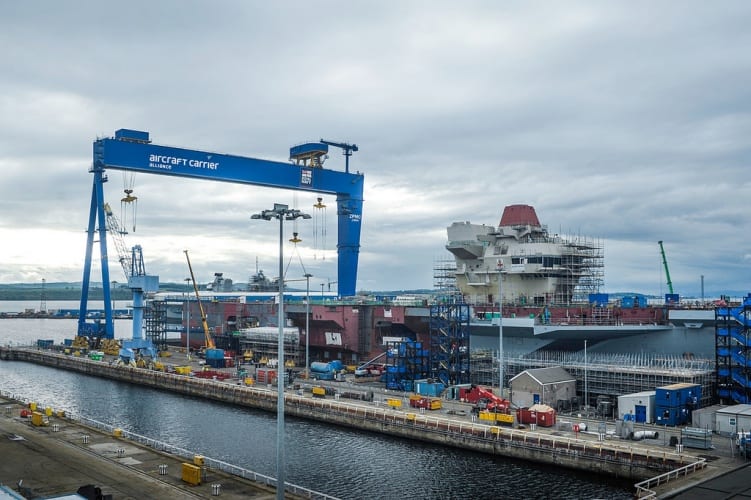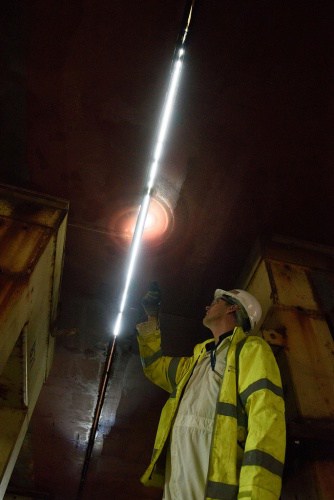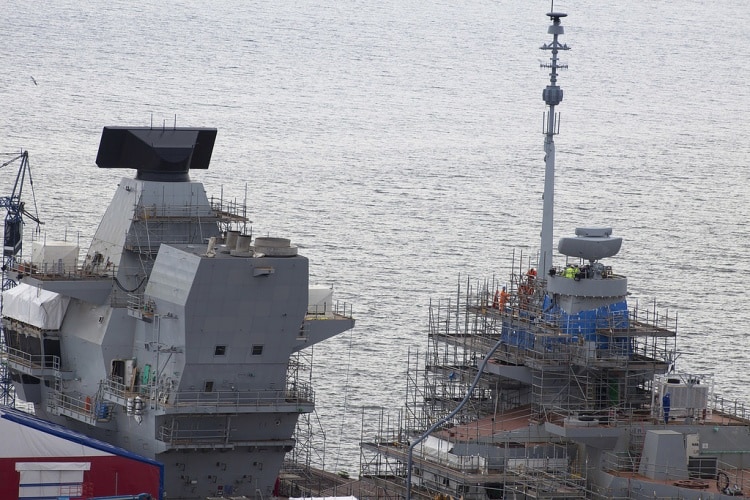Since my last blog in August things have changed quite a bit for me on the Queen Elizabeth Class Aircraft Carrier project, and this reflects the evolving focus on the project as a whole. I have handed over my responsibilities for engineering on the project and am now concentrating on working with the MoD, Portsmouth Naval Base and other stakeholders in preparing for HMS Queen Elizabeth to enter her home port of Portsmouth and then to enter into service with the Royal Navy.
This work includes preparation of all the paperwork including Certificates, Technical Manuals, Maintenance Requirements, drawings etc. in a format that the Ship’s Company will be able to access together with the identification, codification and procurement of the spare parts that are needed for the commissioning and entry into service of the ship. This sort of work is not as “sexy” as the design and build of the ship’s themselves and has traditionally not been given the focus that it needs with the result that new classes of ship have struggled when initially arriving at their home ports.

On the QEC project we are determined that this will not be the case and are now wrestling with issues highlighted from experience on previous projects.
The objective is that the infrastructure at Portsmouth will be ready to accept HMS Queen Elizabeth at the end of 2016 and that the documentation, processes and procedures will all be available at around the same time so that all will be in place by the time the ship arrives in 2017. All is progressing well and it is refreshing to see the enthusiasm of all involved in this important work.
With my change of role the centre of gravity of my work has moved towards the South of the country and thus I visit Rosyth less frequently than used to be the case. One thing I notice is just how much has changed from one visit to the next. This is particularly true of HMS Prince of Wales in the build dock just outside the project office. The scaffolding and tenting around the forward end of the ship has been removed to reveal the painting of the forward end and moreover the forward half of the ship, including the forward island has been moved back in the dock to align with the after part of the ship. This operation conducted on the 9th October involved the 26,500 tonnes forward end being “skidded” a distance of 17 metres on hydraulic rams to align with the 12,000 tonne after section. This is believed to have been the biggest such skidding operation ever undertaken in the UK.The alignment achieved at the centreline was within 3mm and the general alignment of the two blocks was good, just as it has been on all the other bock moves on the project. This is a really great achievement by all those involved. The transom blocks (LB05) for Prince of Wales also arrived in Rosyth during October and with the aft island due to arrive shortly the block transportation for the project will be completed.

The installation of the Blown Optical Fibres that will make up the backbone of the Platform Management System and the Mission Systems has commenced on Prince of Wales. Lessons learned from the first ship have been implemented and the installation is progressing at a good rate. 440V shore connections have been established to Prince of Wales enabling the commissioning of the ship’s low voltage system to commence.
Progress on HMS Queen Elizabeth is less visual but very significant. The power and propulsion commissioning is progressing apace, the diesel generators have been run up to full power, the aft MT30 Gas Turbine has been started and uncoupled running of the propulsion motors has commenced.
The first movement of the forward aircraft lift has occurred under its own power and the lift platform is now located in the maintenance position just below the flight deck while the excess material at the flight deck is cut back to ensure a flush fit between the flight deck and the lift platform. Work is progressing with coating parts of the flight deck with Thermal Metal Spray to withstand the jet efflux from the aircraft.
Hardening of equipment located in the flight deck catwalks in order to withstand the heat and pressure of the aircraft jet efflux while traversing the catwalk in a vertical landing manoeuvre is a very important part of the aviation arrangements of the aircraft carrier. A particularly difficult task has been protection of the life rafts in their stowages in the catwalks while also allowing their hydrostatic release arrangements to work as intended. The ACA team have designed a hinged shield arrangement that has been tested in the hot gas laboratory to prove the level of protection provided and a prototype has now been tested in the basin at Rosyth to prove the hydrostatic release.

These tests have all been successful and the team have received well deserved awards from both BAE and Thales for their efforts in resolving this particularly difficult problem. Commissioning and integration of the HMS Queen Elizabeth Mission Systems is progressing well; the Long Range Radar is now integrated with the Combat Management System with the result that the air picture local to Rosyth can now be displayed in the Operations Room – could be an interesting way to check if my Easyjet flight to Bristol is on time.
So there is a great deal going on in Rosyth and now also building up in Portsmouth as the Nations’ Flagships progress towards entering into servic










Water Sector Talent Exodus Could Cripple The Sector
Maybe if things are essential for the running of a country and we want to pay a fair price we should be running these utilities on a not for profit...